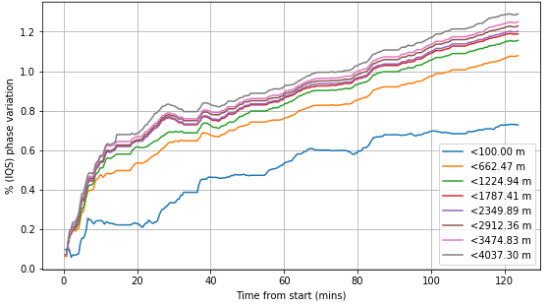...
In general, imaging observations are preceded by a delay calibration on the subarray build, done by the telescope operators. This is applied at the correlator and does not need to be solved for again, though it can be a useful sanity check to solve for delays on the bandpass calibrator during reductions.
A typical duration and cadence for bandpass calibrator visits is for 10 minutes every 3 hours.
It is recommended to visit a phase calibrator every 30 minutes for a duration of 2 minutes.
An absolute polarisation calibrator such 3C286 or 3C138 should be visited at least once during the observation if the user wishes to have polarisation angle information. J1939-6342 is effectively unpolarised and can be used to solve for leakage. The gain calibrator can generally be used to obtain more extensive parallactic angle coverage. Please find further details here: Polarisation calibration.
Delay calibration
Some a priori corrections are generally applied to the correlator before imaging observations are done: key among them is a delay calibration. While the cable delays of the array are stable, small timing offsets can be introduced during synchronisation of the digitizers. After initialising the array the standard operating procedure is to run a short delay calibration observation. During the observation, the noise diode, as well as a bright, well-known source, are used to calculate and apply time-variable solutions for the antenna-based delays.
...
The MeerKAT receivers are temperature stabilised, ensuring that the typical amplitude response remains stable to levels well below 2-3% over the span of a horizon to horizon observation. Under typical ionospheric conditions, the L-band system phase is stable to within 1% level over time-spans exceeding 1 hour (Figure 1). It is recommended to visit a phase calibrator every 30 minutes for a duration of 2 minutes. Two minutes is sufficient for any of the calibrators listed in the Observation Planning Tool (OPT).
Given MeerKAT’s large field of view and sensitivity, contributions from secondary sources in the calibrator field can be significant (see discussion above under Flux and bandpass calibration). Work is currently underway to develop models of our standard calibrator fields. Further information will be added to our pages on MeerKAT L-band and UHF calibrators when available. Note that fits images for L-band calibrators are available, UHF still to follow.
...
